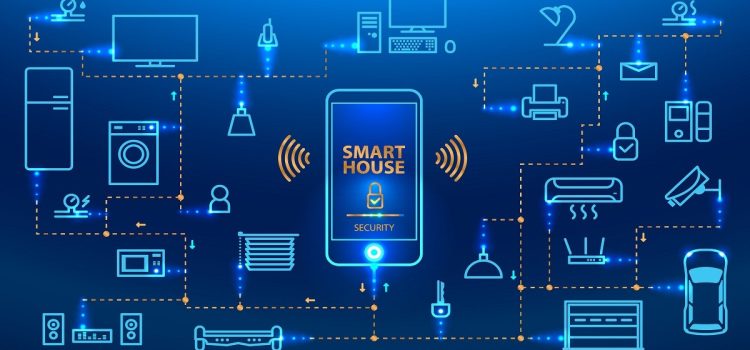
In today’s fast-paced digital world, cybersecurity is becoming more complex and critical. As cyber threats evolve, businesses must adopt cutting-edge technology to protect sensitive data and ensure the security of their networks. AI in cybersecurity has emerged as a game-changer, leveraging machine learning and deep learning to predict and respond to threats in real-time.
In this article, we will explore how AI-powered cybersecurity tools are revolutionizing the industry, the benefits of integrating AI, real-world examples, and case studies showcasing its effectiveness.
Understanding AI in Cybersecurity
AI in cybersecurity refers to the use of artificial intelligence to enhance the ability of systems to detect, prevent, and respond to cyber threats. Machine learning in cybersecurity allows systems to learn from data patterns, recognize anomalies, and continuously improve over time without the need for explicit programming. These tools help cybersecurity professionals by automating many tasks that were previously done manually, enabling faster and more accurate threat detection.
The key distinction with AI-powered cybersecurity tools lies in their ability to detect both known and unknown threats. Traditional cybersecurity systems rely on predefined signatures of known threats to identify malicious activity. However, this approach often fails to detect new, sophisticated attacks. AI, on the other hand, can analyze behavior patterns and detect zero-day vulnerabilities and other novel threats.
Benefits of AI in Cybersecurity

AI-driven cybersecurity offers several critical advantages that make it indispensable for modern organizations:
- Real-time threat detection: One of the main benefits of AI in cybersecurity is its ability to detect threats as they occur. AI-powered systems can analyze vast amounts of data in real-time, identifying anomalies and suspicious behavior that might indicate a cyber attack.
- Automating repetitive tasks: With AI-powered cybersecurity tools, many repetitive tasks, such as log monitoring and vulnerability scanning, are automated. This frees up IT security professionals to focus on more complex tasks and reduces the risk of human error.
- Faster response to threats: AI enhances cybersecurity threat detection by enabling immediate responses to identified risks. This rapid detection reduces the damage caused by attacks, such as ransomware or malware intrusions.
- AI-based threat detection: AI-based threat detection enables systems to recognize even the most subtle indicators of malicious activity. By monitoring normal behavior, AI can detect small deviations that may signify an attack, making it harder for hackers to bypass security measures.
- Reduced false positives: Unlike traditional systems that rely heavily on signature-based detection, AI reduces the occurrence of false positives. This allows security teams to focus on genuine threats rather than wasting time on non-issues.
- Enhanced network security: AI for network security offers the ability to continuously monitor traffic across networks. It identifies potential vulnerabilities before they can be exploited by attackers.
Real-World Examples of AI in Cybersecurity
Several organizations have already implemented AI-powered cybersecurity tools to enhance their defenses. Let’s look at a few notable examples:
- IBM Watson for Cybersecurity: IBM’s Watson AI technology has been applied to cybersecurity to help organizations identify and neutralize threats in real-time. Watson uses machine learning to continuously improve its detection capabilities, analyzing millions of security documents to uncover patterns and risks that traditional systems might miss.
- Darktrace: Another leading example of AI-based threat detection is Darktrace. The company’s AI-powered platform monitors network traffic to detect deviations from normal patterns. When an anomaly is detected, Darktrace automatically generates an alert and, if necessary, initiates a response to mitigate the threat.
- Sophos X-Ops: AI-driven cybersecurity solutions like Sophos X-Ops use AI to bolster their threat detection systems. Sophos employs AI algorithms to scan for malicious behavior and offer real-time protection against ransomware and phishing attacks.
How AI Helps in Cybersecurity Automation

Cybersecurity automation with AI is critical for streamlining security processes. In many organizations, IT teams are overwhelmed by the sheer number of security alerts they receive daily. AI can reduce this burden by automatically filtering out false positives and allowing human analysts to focus on true threats.
For example, AI-powered cybersecurity tools can automate the task of scanning network logs and identifying irregularities. This process would take hours, if not days, if done manually. With AI, the same task can be completed in minutes, significantly improving the speed at which a company can respond to threats.
Moreover, AI-based threat detection systems can automate patch management. AI can detect vulnerabilities in software, prioritize which vulnerabilities pose the most significant risks, and even automate the application of patches to resolve those vulnerabilities.
AI and Machine Learning: The Future of Cybersecurity
As more organizations adopt AI-driven cybersecurity solutions, the integration of machine learning in cybersecurity is becoming more common. Machine learning enables systems to adapt and improve over time. In the context of cybersecurity, this means that AI-powered systems can learn from previous attacks and enhance their ability to detect and prevent future threats.
Deep learning in cybersecurity takes machine learning a step further by mimicking the neural networks of the human brain. Deep neural networks are capable of processing vast amounts of data and identifying patterns that would be impossible for humans to detect. These networks are particularly effective in detecting advanced threats, such as polymorphic malware, which constantly changes its code to avoid detection by traditional antivirus software.
Case Study: AI in Action at Microsoft
A compelling case study that demonstrates the power of AI in cybersecurity is Microsoft’s use of AI to protect its cloud services. Microsoft employs AI-based threat detection to safeguard the millions of devices and users connected to its Azure cloud platform. By analyzing billions of data points daily, Microsoft’s AI systems can identify unusual activity patterns and stop potential threats before they cause damage.
In one instance, Microsoft’s AI system identified a new form of ransomware that was targeting its customers. The system flagged the ransomware’s behavior as abnormal, allowing Microsoft to respond quickly and protect its customers from the attack. This case highlights how AI can outpace traditional security systems, which may have taken days to identify the same threat.
The Risks of AI in Cybersecurity
While the benefits of AI in cybersecurity are numerous, there are also risks. One of the most significant concerns is the potential for AI to be used by cybercriminals. Hackers can leverage AI to automate attacks, making them faster and more effective.
Additionally, AI-based threat detection systems are not infallible. They rely on historical data to recognize patterns, which means they may struggle to detect entirely new forms of cyberattacks that do not fit into established patterns. False positives, though reduced, can still occur, and there’s always the possibility of AI making mistakes that require human intervention to correct.
Skills Needed to Implement AI in Cybersecurity
Implementing AI in cybersecurity requires specialized skills. AI for malware detection, for example, relies on data scientists and cybersecurity professionals who understand machine learning, deep learning, and behavior analysis. These individuals must also have a deep understanding of traditional cybersecurity principles, such as network security, cryptography, and computer forensics.
With the increasing demand for AI-driven cybersecurity solutions, professionals who can bridge the gap between AI and cybersecurity are in high demand. Companies are looking for individuals who can apply AI to complex security challenges and develop innovative solutions to protect against ever-evolving threats.
Final Thought
The future of AI in cybersecurity is bright. As AI-powered cybersecurity tools continue to evolve, organizations will be better equipped to detect, prevent, and respond to cyber threats. AI-based threat detection offers real-time protection, enhances network security, and automates many tasks that were once time-consuming and prone to human error.
However, AI will not fully replace human cybersecurity professionals. Instead, it will serve as an essential tool, helping them to analyze vast amounts of data and respond to threats more effectively. As AI technology continues to improve, we can expect even more sophisticated solutions that will keep pace with the growing complexity of cyber threats.
By embracing AI-driven cybersecurity solutions, businesses can stay one step ahead of cybercriminals and protect their valuable assets in the digital age.







































